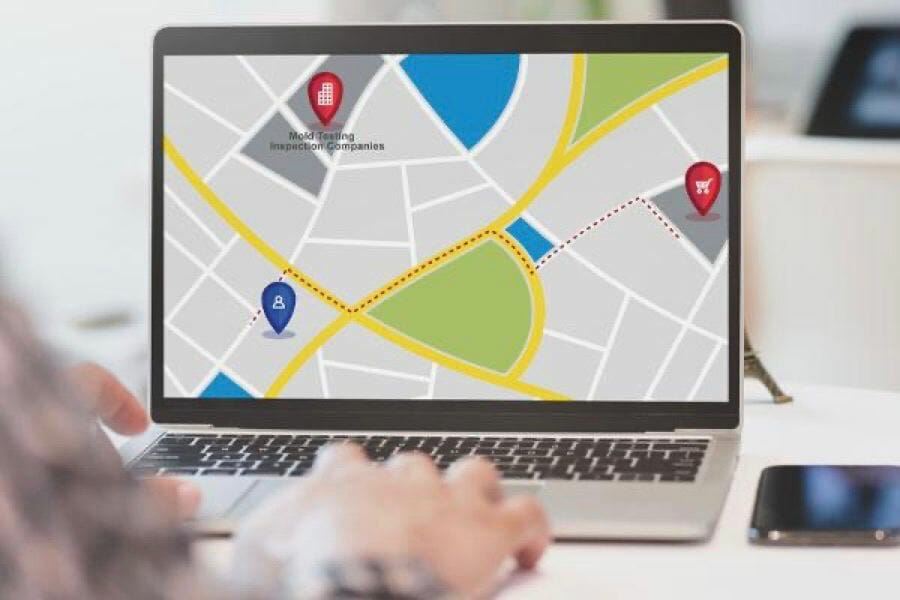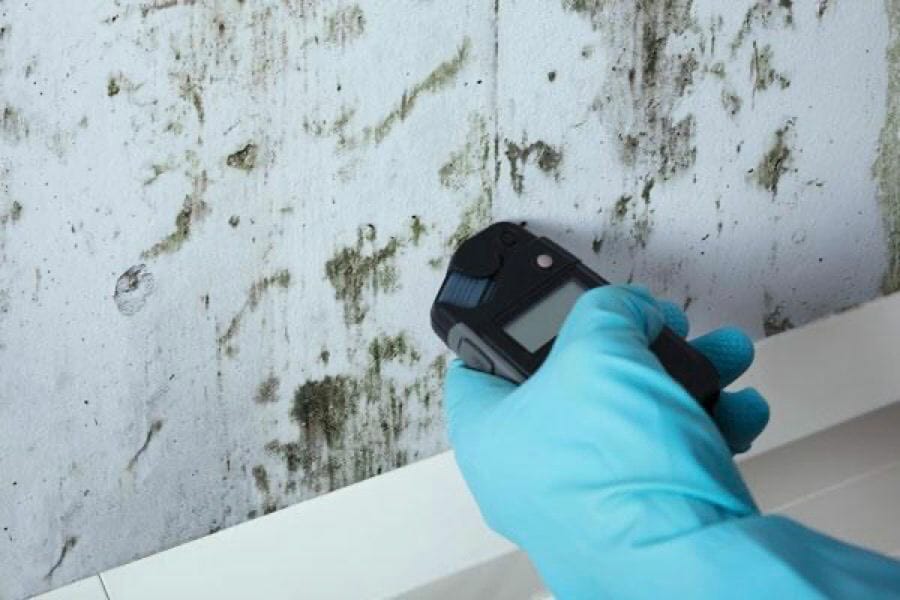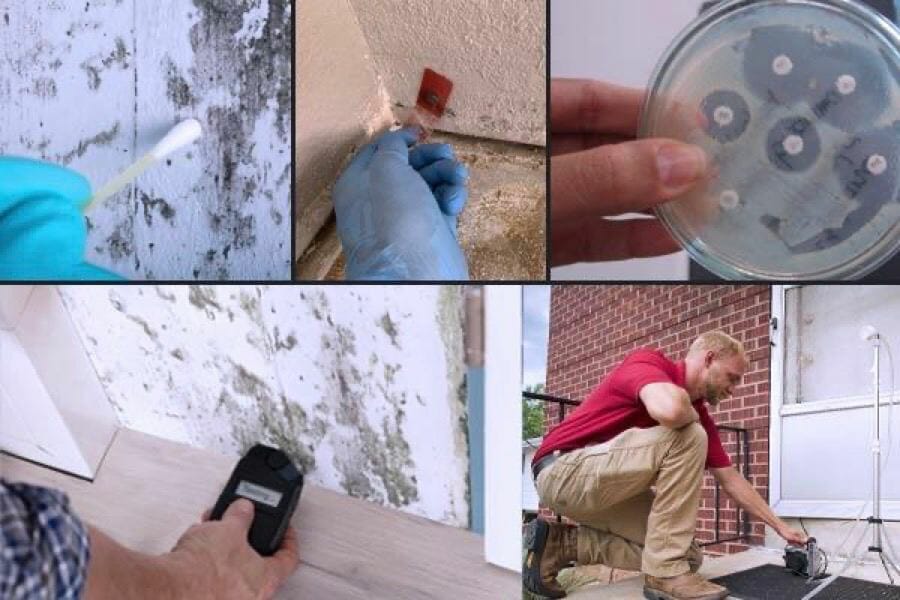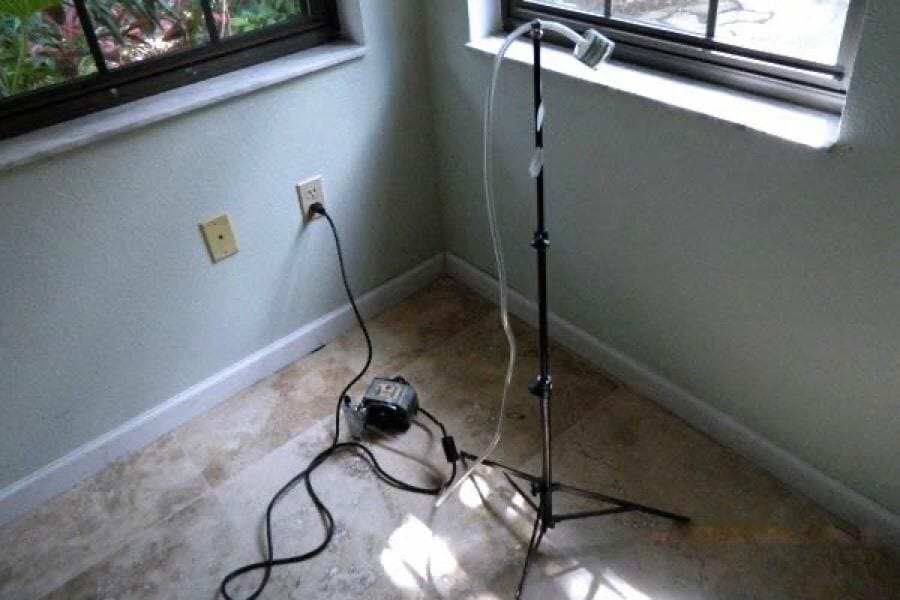From time to time, homeowners, especially those in the colder parts of the country, might come across mold issues. It’s critical to verify that the property you’re thinking of buying or renting is devoid of mold and is safe for living. In these instances, it becomes crucial to get a mold inspection done. However, one might wonder, what’s the typical cost involved?
Finding a local mold inspection company is the most ideal route because they will have some experience with the kind of mold problems in your locality and will eventually charge less because of logistics and other factors. It may also help if you need some kind of clearance from local authorities regarding occupational safety after the inspection.

What we cover
ToggleHow Much for Mold Inspection near me?
Mold inspection can either be free if it’s a basic test or cost anything from $70 to $200 depending on the size of your space and other factors such as the type of mold, tests required, and time required to complete an inspection.
Mold inspection often involves air sampling and physical inspection using special devices and observation. It’s done by qualified occupational hygienists or trained personnel from a mold removal company. The whole exercise could take a few hours or multiple days to complete depending on the size of your home or office building to be inspected, tests to be completed, and other factors.
The following factors may influence the final amount you may need to pay for a mold inspection:
Type of Mold
Some mold varieties are more dangerous or harder to handle during inspection and removal than others. Poisonous black mold (Stachybotrys chartarum-Scientific name) is an example. The inspection crew may need to have more personal protective equipment and will generally take more time to complete an inspection. Expect to pay a higher hourly rate of between $10 to $15 for black mold inspection anywhere in the United States.
Type of Space
Hard-to-access spaces such as basements, inside ceilings, crevices, crawlspaces, and disused attics will generally attract a slightly higher mold inspection fee. On the other hand, open and easily accessible areas such as living rooms, corridors, kitchens, and open office areas will attract lower mold inspection and removal rates.
Tests to Be Conducted
Some mold inspections will involve simple visual inspection and simple air quality tests while others need more sophisticated tests such as chemical sampling and infrared imaging that will generally cost more. Your mold inspector should be able to alert you if these tests are required depending on their initial assessment of the site.
Testing Period and Contract Type
How long will the mold inspection take to complete and what kind of contract have you signed with the mold inspection and removal company? Some companies will offer a flat rate to cover the entire inspection exercise while others will offer hourly or itemized contracts. This essentially means that inspection costs tend to vary from one job to another and from one company to another.
Are There Free local Mold Inspection Services?

Yes, there are several ways to have a free mold inspection. Most mold remediation and removal companies will offer free mold inspection services as a way to acquire new clients in their locality. Be sure to approach a mold removal company as opposed to a specialized mold inspector or inspection company if you want to inquire about a free, complimentary mold inspection.
In most cases, mold removal companies will offer a free inspection if there is a higher probability of offering mold remediation or removal services to a client. Ensure that the mold inspection is done professionally and that there is clear evidence to prove that you have a mold problem if you choose this route.
In rare cases, local health councils or organizations may conduct mandatory mold inspections, especially for business premises as part of the occupational safety and public health initiatives. These tests are mostly free but may attract more costs especially if mandatory mold removal is ordered after the inspection. It’s always advisable to ensure the safety of your building or home by having routine mold inspections done as opposed to waiting for these mandatory tests.
The last option is to have the realtor or seller pay for the mold inspection if you are purchasing a new house or building. This will be part of the closing costs to be paid for by the seller or realtor and should be included as a clause in the house purchase contingencies. If accepted by the seller or realtor, the inspection must be done to validate the sale agreement.
How Do Inspectors Test for Mold?

A mold inspection can be as simple as a visual inspection to see if there is mold growing on visible surfaces such as walls and as complex as conducting chemical and air quality tests to check for invisible but usually dangerous mold buildup. Here are some of the most common ways used by qualified inspectors to test for mold:
Observation/ Visual and Physical Testing
Qualified and experienced local mold inspectors or occupational safety experts can be able to tell if you have mold through observation. Some mold types will form on damp surfaces such as walls, sinks, and ceilings. This is usually the first method used but in conjunction with other, more scientific methods during an inspection. At the end of the visual inspection exercise, the inspector should be able to document the following:
- Presence of mold in your home or office
- What type of mold it is (in some cases).
- Where the mold is located
- Size or surface area of mold formation
If you have a relatively mild mold problem, then the inspection might be concluded at this point and a removal and prevention solution drafted. The mold inspector will give a removal quote based on their observation and assessment of the problem. However, most mold inspections require more tests especially if there is mold present in the air or on hidden surfaces such as behind drywall.
Air Sampling and Air Quality Testing in my area
These tests involve using special tools such as air samplers and particle collectors to check for mold contamination in rooms. Mold that has formed over a long period and is usually floating around in the air and is more dangerous than surface-growing mold. An air sampling test will ensure that mold presence in the air is detected and measured for safety.
Due to its size and physical characteristics, black mold and other toxic varieties tend to become airborne. Breathing the mold particles over extended periods may cause serious medical conditions in human and domestic animals such as lung infections, allergic reactions, difficulty breathing, etc.
It’s also important to note that having mold in the air is not entirely bad as it’s usually impossible to have air free of mold and other foreign particles. However, excessive mold or the presence of toxic black mold in the air is dangerous.
An air sampling and air quality inspection will often lead to mold remediation being carried out to reduce the amount of mold in the air. In the case of black mold, more tests and investigations will be needed to identify its origin and how to prevent it from spreading or growing further.
Moisture Testing
These tests are necessary during mold inspection as they help identify potential sources of mold. Some mold is also invisible so the presence of excess moisture on a surface or in the air would suggest that there is mold. Moisture testing is done using handheld devices that can suck tiny bits of atmospheric air and particles and give accurate readings for moisture. Moisture testing will also help in identifying the cause of mold formation for prevention.
Chemical Testing
This is, by far, the most scientific method used to test for mold during an inspection. Qualified inspectors will use chemical swabs on various surfaces with visible mold formation or suspected to have mold. The samples collected will be chemically tested to check for the presence of mold and to identify the type of mold. Chemical tests can be done and concluded onsite or taken back to the mold inspection company’s laboratory for further analysis.
Chemical testing is more sophisticated and will attract higher fees than any other test. For paid inspections, you should expect to pay between $35 to $100 per test. However, a chemical test may not be necessary for all inspections especially if the mold is visible and identifiable through other methods.
Infrared Imaging
Mold inspectors will often turn to infrared imaging equipment to check for invisible or tiny mold formations on surfaces. Infrared imaging is usually done by a qualified thermographer and will yield more accurate results with regard to the presence of mold on surfaces. Using the images, the inspectors may also be able to identify the type of mold, source, and source. Infrared imaging is usually done onsite and is faster and cheaper than chemical testing.
Can I Test Air for Mold myself?

Air quality testing and air sampling are important parts of mold inspection so, yes, you can test the air for mold. The presence of mold on surfaces such as walls and inside ceilings is usually an indication that there is excessive mold in the air you breathe that could cause a lot of health problems for you and your loved ones or employees in an office building. Inspectors must use special air sampling tools to detect and measure the amount of mold floating around in the air and recommend removal or remediation.
Are Their DIY Mold and Air Testing Kits?
There could be several kits out there that are marketed as DIY mold testing kits. However, experts warn against using such kits because they can be unreliable. Be sure that the DIY mold testing kit you purchase is reliable and approved by the relevant authorities in your location. You can use the DIY mold and air testing kit as a first option but schedule a mold inspection with a qualified inspector if you suspect a mold problem in your building or home.
Mold Inspectors Certification
A mold inspector must possess some level of certification from accredited institutions in your area. For instance, certified occupational hygienists, mold assessors, industrial assessors, and occupational health inspectors are allowed to do mold inspections in the country and possess Mold Inspector Certification in the USA. They may also be a member of the National Association of Mold Professionals.
Also, check if there are additional requirements in your state for such professionals especially if the inspection is being done on a commercial property or as part of a property sale contingency clause.
Cost of Mold Remediation near me
Mold remediation is the reduction of mold in a building to healthy levels. While costs vary depending on various factors such as the size of the building and mold type, mold remediation costs range between $70 to $3,500 in the United States. The mold inspector should be able to give a quote after the inspection has been completed (if he/she works for a mold removal and remediation company). You can also use the mold inspection report to obtain a quote from various mold removal and remediation companies near you.
Mold Testing Before Buying A Home
It’s advisable to have mold testing or inspection done before you purchase a new home. Most buyers will add this as an inspection clause in the contingencies to compel the seller to either allow for an inspection or pay for the inspection.
FAQ’s
Who Pays the Owner or Me?
This depends on the agreement or inspection clause on your house purchase contract. In most cases, mold inspection is either paid for by the owner or is included as part of the closing costs. Most sellers will pay for the mold inspection as a sign of good faith.
Can local Mold Inspectors Also Clean Mold?
Yes, most mold inspectors come from mold removal and remediation companies. However, some inspectors will conduct the necessary tests and generate a mold inspection report that you can use to obtain mold removal quotes.
How Do Inspectors Know If Mold Is Behind Drywall?
Mold inspectors use a number of tools and techniques to check for hidden mold. For instance, thermal imaging equipment is often used to test for the presence of mold behind drywall or inside the ceiling and between partitions.
Can A House with Black Mold Be Fixed?
Black mold can be removed using a number of cleaning agents and equipment. The removal company will find a removal solution that gets rid of the black mold and prevent it from growing in the future. A post-removal inspection is required for black mold.














